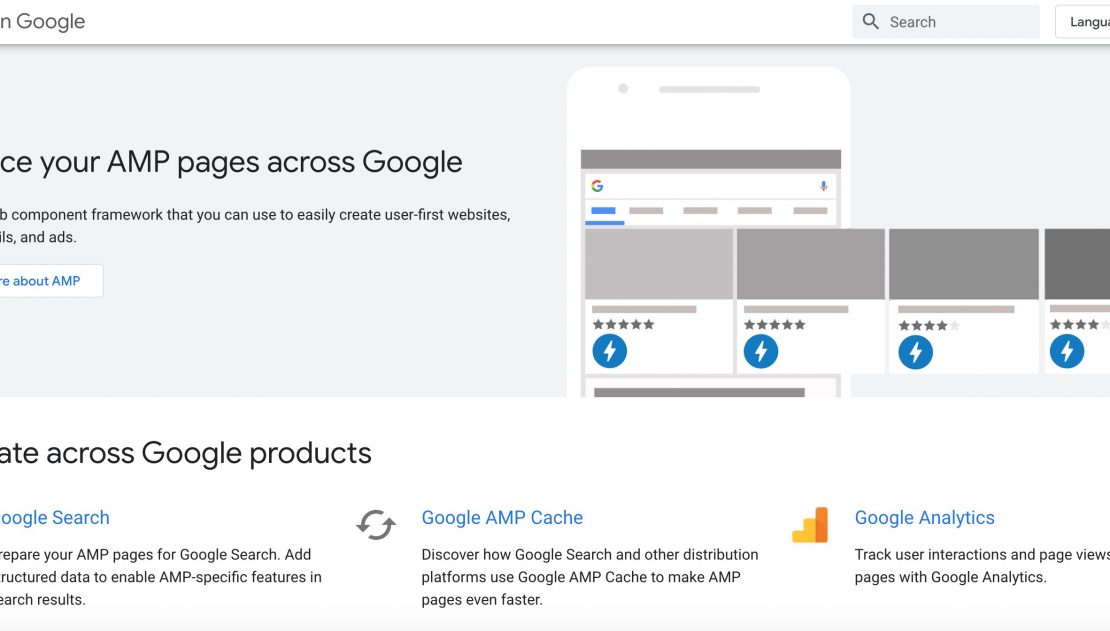So Google in co-operation with other large companies decided that the mobile web is broken and so the AMP (Accelerated Mobile Pages) project was born. It might work for large companies and websites but for small websites Google AMP sucks. In this post you will find out why and hopefully avoid the mistake of adding Google AMP to your website.
What is Google AMP?
AMP (Accelerated Mobile Pages) is a project backed by Google to deliver static content faster to the user. It consists of three parts.
1. AMP HTML
AMP uses its own HTML, AMP HTML, which is HTML with some restrictions. Most of the tags are just good old HTML tags but there are few AMP-specific tags in the mix as well.
2. JavaSript Library
Yes, yet another JavaScript library. AMP JS library takes care of rendering your page in an optimized way. It aims to load the most important part of the page first, content. The thing that the user actually want to see first.
3. CDN – Content delivery
After you have created your AMP page Google caches a static copy of your site and serves it throught their content delivery network (CDN). This one reason as well why AMP pages load fast.
How to implement AMP to a website?
You might have figured out by now that you basically need to create a new version of your site to the mobile users. If you use a popular CMS like WordPress, it is somewhat simple.
WordPress
WordPress covers about a quarter of the websites and the easiest approach with Worpdress is to create a new version for mobile users. This can be done just by installing the AMP plugin that is available for free. To be able to customize your AMP version easily I recommend also installing the AMP for WP plugin which is also free.
Though with Worpdress AMP is pretty easy to set up you should still consider if it really is worth it. Users that come to your site on a mobile device don’t really have the option to choose whether to use the normal size or the AMP version that lacks features that they actually might appreciate. Very often the argument that I hear when adding new features WordPress is, that it is so easy. Even if it is easy to do, as it is, you still need to use more time than before with your site. Perhaps you just could use this time to improve to the whole site.
Why Google AMP sucks?
Ok, let’s go to the main topic. Why Google AMP sucks!
You have two versions of the same page so you need to be careful about how this affects your SEO. Search engines don’t like duplicate content so make sure you use canonical tags with the duplicate pages.
There is more maintenance work as you now have two pages of each to maintain. Yes, the content in WordPress, for example, is being automatically updated to the AMP version as well. But since the AMP version strips all the excess out from your website you need to figure out again how to display ads etc. on AMP. Also if you are using WordPress, your plugins won’t probably work on the mobile version. So while you might make small gains in mobile traffic, you might see a loss in revenue.
Take for example one of the affiliate websites, like nettikasinot.media, online casino comparison site in Finnish. The site itself does not have that much content and is almost blazing fast. Fast enough for any device/connection. Adding AMP into the mix would cause more work and very limited gains..
Google AMP benefits?
Well, it isn’t necessarily all bad. For large sites that already use a lot of third-party code, it might be an easier solution to just create a new mobile version from scratch. But for small and medium-sized websites it is a better idea just to optimize the current version so that it is fast on both desktop and mobile.
Is it good for SEO?
At the moment Google says that using AMP is not yet a ranking factor though, but top positions might be rewarded by showing your post in a fancy carousel.
